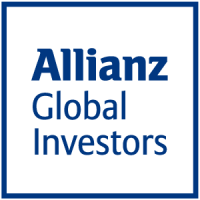Below you will find the best thought-leadership for UK pension funds, consisting of research, reports and white papers, written by consultants, asset managers, professional bodies and academics.
The UK’s occupational pension system is governed by the IORP Directive (Directive 2008/41/EC), offering three chosen platforms: Defined Benefit (BD), Defined Contribution (DC), or Hybrid (HY). A key difference between DB and DC pension schemes is ultimately market risk. DB pension schemes do not expose scheme members to market risk – whereas members of DC pensions schemes cannot escape it...
.
A DB pension scheme (or workplace pension scheme) is a reward-based system; the pension paid is based on years of service contributed to your employer, together with the salary earned. When you reach retirement age (currently 66, rising to 67 by 2028), the scheme will pay out a guaranteed income for life, growing year-on-year. Both the employer and the employee contribute to the scheme, with a legal obligation on the employer to ensure the scheme is sufficiently well-funded to pay pension incomes.
A DC pension scheme is simply a pay-in system where the money invested accumulates over time, from which a pension can be drawn from the age of 55. DC schemes, or personal/stakeholder pension schemes, can be a workplace scheme, arranged by the auto-enrolment feature once you qualify with sufficient duration of service at your place of work, or a private pension scheme arranged by yourself. Money that is then contributed to this pot is put into investments, which can increase or decrease the value of the pot by the time you retire.
A Hybrid pension scheme is neither a DB nor DC but has characteristics of both. The structure of this relies on ‘risk sharing’; in a DB scheme, the employer usually bears the risk to pay contributions. In a DC scheme, the ‘member’ takes on the risk associated with their terminal value at the retirement age. A Hybrid pension scheme could be a: combination scheme, self-annualising DC scheme, final salary lump-sum scheme, underpin scheme, and cash balance scheme.
The asset mix of pensions funds (the collective of all the schemes) consist mostly of fixed income (mainly sovereign bonds and corporate bonds), equities, commercial property, alternative investments and cash.
Key UK pension fund institutions include The Pension Regulator (TPR), Pension Protection Fund (PPF), Department for Work and Pensions (DWP), Financial Conduct Authority (FCA), Money and Pensions Service.














